Non-payment by clients can be a significant challenge for eco-tourism providers. The debt collection process in this industry involves several phases, each with specific actions and considerations. Understanding these phases, evaluating the probability of debt recovery, and making informed decisions about legal action are crucial for financial stability and operational continuity. This article outlines the steps eco-tourism businesses can take when faced with non-paying clients, including the initial collection efforts, the involvement of affiliated attorneys, and the assessment of litigation viability.
Key Takeaways
- Eco-tourism providers should initiate the debt collection process promptly, starting with letters, calls, and skip-tracing within 24 hours of identifying a non-paying client.
- If initial collection efforts fail, the case should be forwarded to an affiliated attorney within the debtor’s jurisdiction to exert legal pressure through law firm letterheads and calls.
- Assessing the viability of litigation is critical; if the debtor’s assets suggest low recovery chances, case closure may be recommended to avoid unnecessary costs.
- Providers must consider the upfront legal costs of litigation, typically ranging from $600 to $700, and the collection rates, which vary based on the age and amount of the claim.
- In the event of unsuccessful litigation, eco-tourism businesses can opt to continue standard collection activities or close the case, with no further costs owed to the firm or attorney.
Understanding the Eco-Tourism Debt Collection Process
Phase One: Initial Collection Efforts
Within the first 24 hours of identifying a non-paying client, eco-tourism providers initiate a robust collection process. This includes dispatching a series of demand letters and employing skip-tracing to uncover the debtor’s financial status. Persistent contact is key, with daily attempts made through calls, emails, and texts.
The goal is to secure payment swiftly and amicably, minimizing the need for further action.
If these efforts do not yield results within 30 to 60 days, the case escalates to Phase Two, involving specialized attorneys. It’s essential to act decisively but fairly, keeping the lines of communication open.
- Send initial demand letters
- Conduct skip-tracing for debtor information
- Engage in daily communication attempts
Remember, the initial phase is critical for setting the tone for potential recovery. It’s a delicate balance between firmness and understanding, reflecting the eco-tourism company’s commitment to sustainable practices and fair business.
Phase Two: Involvement of Affiliated Attorneys
When initial collection efforts falter, the baton is passed to affiliated attorneys. Their involvement escalates the seriousness of the situation for the debtor. Here’s what to expect:
- The attorney drafts a series of demand letters, leveraging the weight of legal letterhead.
- Concurrently, attempts to contact the debtor via phone intensify.
- If these efforts yield no resolution, a recommendation for the next step is prepared.
The transition to legal representation marks a critical juncture in the debt collection process, often prompting a debtor to settle.
Should the attorney’s efforts remain unfruitful, the path forward hinges on a careful assessment of the debtor’s ability to pay. This assessment will inform whether to proceed with litigation or to close the case, ensuring that resources are allocated judiciously.
Phase Three: Assessing the Viability of Litigation
When the standard collection efforts hit a wall, the crossroads of litigation loom. Deciding to litigate is not a step to be taken lightly. It involves a careful examination of the debtor’s assets and the likelihood of successful debt recovery. If the odds are not in your favor, a recommendation to close the case may be the most prudent course of action, sparing you unnecessary expenses.
Should litigation seem a viable path, you’re faced with a choice. Opting out means no further legal costs, with the option to continue standard collection activities. Choosing to litigate requires an upfront investment, typically between $600 to $700, covering court costs and filing fees. Here’s a snapshot of potential costs and collection rates:
- Upfront legal costs: $600 – $700
- Collection rates (1-9 claims):
- Under 1 year: 30%
- Over 1 year: 40%
- Under $1000: 50%
- With attorney: 50%
The decision between litigation and standard collection should be based on a clear understanding of potential outcomes and fees. Weigh the probability of debt recovery against the legal costs before proceeding.
Remember, if litigation does not result in debt recovery, the case will be closed, and you will owe nothing further. This is the stark reality of the eco-tourism debt collection process.
Evaluating the Probability of Debt Recovery
Investigating the Debtor’s Assets
Before taking legal action, a thorough investigation of the debtor’s assets is crucial. Identify tangible and intangible assets to gauge the potential for debt recovery. This step is not just about locating assets but also assessing their value and liquidity.
Asset investigation is a strategic move to ensure that the efforts and costs invested in debt collection are justified. Here’s a quick rundown of what to consider:
- Real estate holdings
- Bank accounts and investments
- Business ownership and interests
- Personal property and valuable items
The goal is to paint a clear financial picture of the debtor. This informs the decision on whether to pursue legal action or consider alternative measures.
Remember, the feasibility of recovery is tied to the debtor’s financial stability. Legal action for debt collection should be based on a solid understanding of what can be recovered. International attorneys can provide support, but their fees are often contingent on the claim amount and the complexity of the case.
Determining the Likelihood of Successful Collection
Assessing the debtor’s ability to pay is crucial before proceeding with legal action. A thorough investigation of the debtor’s assets is the cornerstone of this phase. If assets are sufficient, the probability of recovery increases, warranting the continuation of the case.
The decision to litigate hinges on the viability of debt recovery.
However, if assets are scarce or non-existent, the likelihood of successful collection plummets. In such scenarios, our firm may advise case closure to avoid unnecessary expenses. This recommendation is based on a pragmatic evaluation of the debtor’s financial landscape and the anticipated effectiveness of further collection efforts.
- Initial asset investigation
- Assessment of recovery potential
- Strategic recommendation
Our rates reflect the complexity of the collection process, with different percentages applied based on the age and amount of the claim. The decision to proceed with litigation or to continue with standard collection activities rests with you, the eco-tourism provider.
Recommendations for Case Closure or Continuation
After a thorough investigation of the debtor’s financial status, a pivotal decision awaits: to close the case or to litigate. Deciding not to litigate allows for withdrawal or continued standard collection efforts without additional costs. Opting for litigation necessitates upfront legal fees, typically $600-$700, and a commitment to pursue recovery through the courts.
The choice hinges on the likelihood of debt recovery. Closure is advised when prospects are dim, sparing unnecessary expenses. Litigation is recommended when recovery seems probable, despite the initial costs.
Rates for debt collection services are contingent on claim specifics, such as age and amount. Here’s a snapshot of the fee structure:
- Accounts under 1 year: 30% (1-9 claims) or 27% (10+ claims)
- Accounts over 1 year: 40% (1-9 claims) or 35% (10+ claims)
- Accounts under $1000: 50% regardless of claim count
- Accounts placed with an attorney: 50% across the board
The decision to close or continue is critical. It should be made with careful consideration of the debt recovery rates and the financial implications of both paths.
Making an Informed Decision on Legal Action
Understanding the Costs of Litigation
Before taking legal action, eco-tourism providers must grasp the financial implications. Litigation is not just a legal step; it’s a financial commitment. Costs can escalate quickly, from court fees to attorney charges.
Upfront legal costs are the immediate hurdle. These typically range from $600 to $700, depending on the debtor’s jurisdiction. This initial outlay covers court costs, filing fees, and the expenses to initiate the lawsuit.
Remember, these costs do not guarantee success; they are merely the price of entry to the legal arena.
The fee structure for debt collection is contingent on recovery. If the litigation route is chosen and proves unsuccessful, the case is closed without further financial obligation to the firm or affiliated attorney. Here’s a simplified breakdown of potential collection rates:
- Accounts under 1 year old: 30% of the amount collected.
- Accounts over 1 year old: 40% of the amount collected.
- Small accounts under $1000.00: 50% of the amount collected.
- Accounts requiring attorney involvement: 50% of the amount collected.
These rates underscore the importance of a thorough assessment before proceeding with litigation. The decision to litigate should be informed by a realistic evaluation of the potential to recover the debt.
Weighing the Benefits Against Potential Risks
When considering legal action for unpaid eco-tourism fees, it’s crucial to balance the potential gains against the risks involved. The prospect of full debt recovery can be enticing, but one must also consider the possibility of litigation failure and the associated costs.
Costs can escalate quickly in legal disputes, and the initial investment may not always lead to a successful outcome. Here’s a breakdown of potential financial implications:
- Upfront legal costs: Typically ranging from $600 to $700.
- Collection rates: Varying based on the age and amount of the claim.
- Risk of unsuccessful litigation: May result in case closure with no additional fees owed.
Making an informed decision requires a thorough assessment of these factors, alongside the feasibility of debt recovery. If the likelihood of collecting the debt is low, discontinuing legal pursuits may be the most prudent course of action.
Ultimately, the decision to litigate should be made after careful consideration of the recovery system‘s effectiveness and the debtor’s ability to pay. The guide on collecting unpaid fees for climate change consultation can offer additional strategies and insights.
The Process of Filing a Lawsuit
When the decision to pursue legal action is made, eco-tourism providers must be prepared for the formalities of filing a lawsuit. The process begins with the payment of upfront legal costs, which can range from $600 to $700, depending on the debtor’s jurisdiction. These costs cover court fees, filing fees, and other related expenses.
The decision to file a lawsuit should not be taken lightly. It is a critical juncture where providers must decide post-investigation whether to close the case or embark on the path of litigation.
Upon payment, an affiliated attorney will initiate the lawsuit, seeking recovery of all monies owed, including the costs incurred to file the action. If litigation proves unsuccessful, the case is closed, and no further fees are owed to the firm or attorney.
Here’s a quick rundown of the collection rates:
- Accounts under 1 year: 30% (1-9 claims) or 27% (10+ claims) of the amount collected.
- Accounts over 1 year: 40% (1-9 claims) or 35% (10+ claims) of the amount collected.
- Accounts under $1000.00: 50% of the amount collected.
- Accounts placed with an attorney: 50% of the amount collected.
Financial Considerations for Eco-Tourism Providers
Upfront Legal Costs and Fees
Eco-tourism providers must be prepared for the financial implications of debt recovery. Understanding upfront legal costs and collection rates in environmental legal services is crucial for financial planning. Fees range from $600 to $700, with tailored collection rates based on claim nature and age.
Initial costs are just the beginning. Providers should anticipate additional expenses as the case progresses. Here’s a breakdown of potential fees:
- Court costs and filing fees: $600 – $700
- Collection rates (based on claim age):
- Under 1 year: 30% or 27% (for 10+ claims)
- Over 1 year: 40% or 35% (for 10+ claims)
- Under $1000: 50% or 40% (for 10+ claims)
- With attorney involvement: 50%
Deciding to litigate means committing to these costs upfront, with no guarantee of recovery. It’s a financial gamble that requires careful consideration.
Remember, if litigation is unsuccessful, the case will be closed, and you will owe nothing further. This no-recovery, no-fee structure can be a silver lining in the complex process of eco-tourism debt collection.
Collection Rates and Fee Structures
Eco-tourism providers must navigate the complexities of debt recovery with a clear understanding of collection rates and fee structures. Collection rates for recovering unpaid consultancy fees range from 27% to 50% based on the number of claims, age, and amount of accounts. These rates are pivotal in forecasting the potential return on collection efforts.
Fee structures are equally critical. They often vary depending on the age of the account and the total amount due. For instance, newer accounts may incur a lower collection rate than older ones, reflecting the increased difficulty in recovering long-standing debts.
It’s essential to consider these financial aspects carefully to ensure that the cost of debt recovery does not outweigh the benefits.
Here’s a simplified breakdown of typical fee structures:
- Accounts under 1 year in age: 30% of the amount collected.
- Accounts over 1 year in age: 40% of the amount collected.
- Accounts under $1000.00: 50% of the amount collected.
- Accounts placed with an attorney: 50% of the amount collected.
These percentages are indicative and can differ based on the service provider and the specifics of each case.
Implications of Unsuccessful Litigation
When litigation fails to recover eco-tourism debts, the financial and strategic repercussions must be carefully considered. The outcome of unsuccessful attempts can significantly impact future operations and financial planning.
Costs incurred during the legal process are often non-recoverable, leading to a net loss. It’s crucial to analyze the fee structure beforehand to understand potential losses. Eco-tourism providers may face a choice: absorb the costs or attempt to recoup them through increased service prices, potentially affecting competitiveness.
The decision to litigate should be weighed against the possibility of debt recovery failure and its implications.
The closure of a case post-litigation without debt recovery can also influence the provider’s reputation and client relationships. Providers must strategize on maintaining client trust while managing financial setbacks. Here’s a breakdown of the fee structure based on the number of claims:
- For 1-9 claims:
- Accounts under 1 year: 30% of the amount collected.
- Accounts over 1 year: 40% of the amount collected.
- Accounts under $1000.00: 50% of the amount collected.
- Accounts placed with an attorney: 50% of the amount collected.
- For 10 or more claims:
- Accounts under 1 year: 27% of the amount collected.
- Accounts over 1 year: 35% of the amount collected.
- Accounts under $1000.00: 40% of the amount collected.
- Accounts placed with an attorney: 50% of the amount collected.
Understanding these rates is essential for eco-tourism providers when considering the financial implications of unsuccessful litigation.
Alternative Measures and Post-Litigation Scenarios
Continuing Standard Collection Activities
When litigation is not the chosen path, eco-tourism providers can revert to standard collection activities. Persistence is key; maintain a steady flow of communication with debtors through calls, emails, and faxes.
- Daily attempts to contact debtors for the first 30 to 60 days.
- Utilize skip-tracing to update debtor information.
- Send a series of demand letters via US Mail.
The goal is to achieve a resolution without escalating to legal action. Standard collection efforts can be effective and less costly.
If these efforts remain fruitless, it’s essential to reassess the situation. Consider the debtor’s response, or lack thereof, and the viability of continued pursuit. Remember, each case is unique and requires a tailored approach.
Options After Litigation Failure
When litigation doesn’t yield the desired results, eco-tourism providers must pivot to alternative strategies. Options for debt recovery without litigation include negotiation, payment plans, mediation, and debt selling. Each option should be weighed carefully, considering the costs versus the recovery potential, the impact on client relationships, and the fee structures involved.
It’s crucial to assess whether continued pursuit is financially prudent or if it’s time to cut losses and close the case.
If choosing to continue with collection activities, consider the following steps:
- Re-initiate contact with the debtor to explore willingness for a new payment arrangement.
- Engage a debt mediator to facilitate a fair settlement.
- Explore the possibility of selling the debt to a third party at a reduced rate.
Remember, the goal is to maximize recovery while minimizing further expenses and preserving business relationships.
Final Steps and Closure of the Case
After exhausting all avenues, the final steps involve a clear decision on the closure of the case. If recovery is deemed unlikely, the recommendation is to close the case, incurring no further costs. This decision is based on a comprehensive assessment of the debtor’s assets and the feasibility of successful collection. In the event of litigation failure, the case is also closed, with no additional fees owed.
Continued collection efforts may persist, albeit through standard practices such as calls and emails. It’s crucial to understand that at this juncture, persistence can sometimes yield results, even when formal legal avenues have been exhausted.
The closure of a case is not the end of the road. It’s an opportunity to refine strategies and prepare for future encounters with debt recovery.
Finally, it’s important to revisit and possibly revise the terms of service to prevent future instances of non-payment. Implementing proactive measures, such as clear payment terms and penalties for late payments, can deter delinquency and safeguard your eco-tourism business.
Navigating the aftermath of litigation can be complex and daunting. At Debt Collectors International, we specialize in providing tailored solutions for alternative measures and post-litigation scenarios to ensure you recover what is owed to you. Our expert collectors are ready to serve you with over 30 years of experience in commercial collection and litigation. Don’t let unpaid debts disrupt your business any longer. Visit our website to learn more about our services and take the first step towards securing your financial future.
Frequently Asked Questions
What happens during Phase One of the eco-tourism debt collection process?
Within 24 hours of placing an account, the collection agency sends out the first of four letters, conducts skip-tracing and investigations to obtain financial and contact information, and attempts to contact the debtor through various means. If these attempts fail after 30 to 60 days, the case moves to Phase Two.
What occurs when a case is escalated to Phase Two with affiliated attorneys?
The affiliated attorney will draft and send letters on their law firm letterhead demanding payment and will attempt to contact the debtor by phone. If these efforts are unsuccessful, the collection agency will recommend the next steps.
What are the possible outcomes of Phase Three in the collection process?
Phase Three can result in either closure of the case if the likelihood of debt recovery is low, or litigation if there’s a chance of success. If litigation is chosen and fails, the case is closed with no additional cost to the client.
What upfront legal costs can be expected if I decide to proceed with litigation?
Clients can expect to pay upfront legal costs such as court costs and filing fees, typically ranging from $600 to $700, depending on the debtor’s jurisdiction.
How does the collection rate structure work for eco-tourism providers?
Collection rates vary based on the number of claims and age of the accounts, with percentages ranging from 27% to 50% of the amount collected, depending on these factors.
What options do I have if litigation fails to recover the debt?
If litigation is unsuccessful, the client can choose to continue standard collection activities or close the case without owing anything further to the collection agency or the affiliated attorney.





